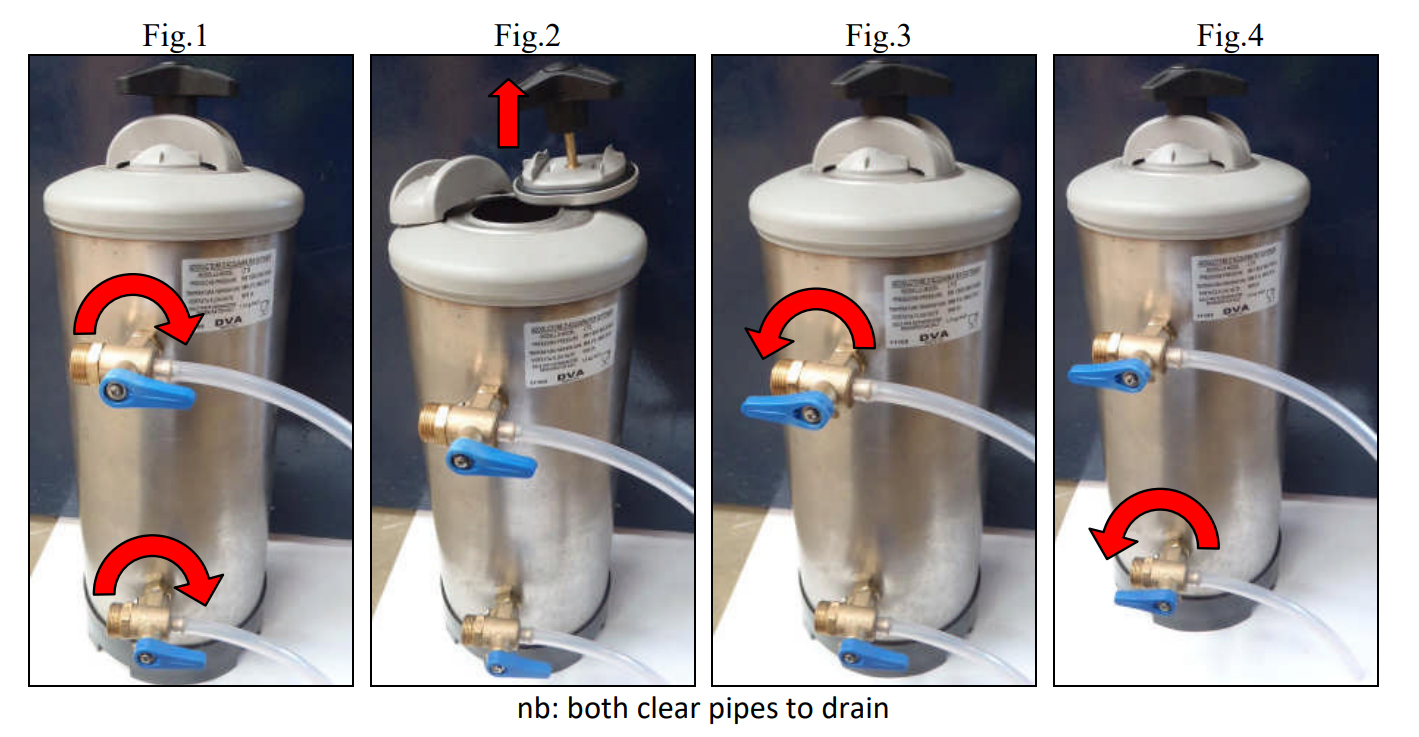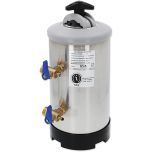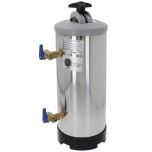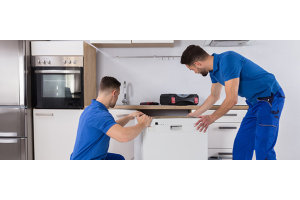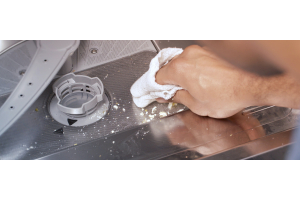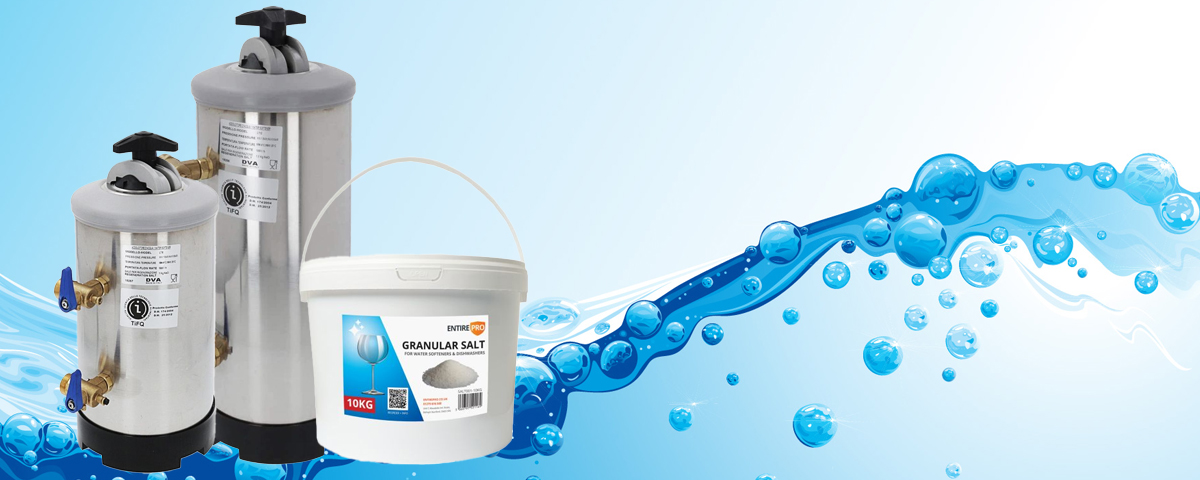
What is a Manual Water Softener?
A manual 8 or 12-litre water softener can be fitted to any glasswasher or commercial dishwasher, playing an extremely important role in preventing limescale buildup from damaging your machine.
They are essential in hard water areas, and failure to maintain a water softener could invalidate your warranty. A properly functioning water softener ensures good washing results, lowers your detergent usage, and, most importantly, avoids expensive breakdowns due to limescale.
Installing A Manual Water Softener
The water softener is connected between the mains water supply and the equipment by two (usually blue) flexi hoses. The tap at the top of the water softener should be connected to the incoming mains water supply, while the tap at the bottom should be connected to the machine.
Ensure that the two lengths of clear plastic hose are also fitted to the drainage side of the taps. When in the working position, the valves should both be at 9 o'clock.
How Often Should You Regenerate a Manual Water Softener?
It is vitally important that the water softener is regenerated regularly. The required frequency of regeneration will significantly change depending on the hardness of the incoming water supply, the size of the water softener, water consumption of the dishwasher, and how frequently it is being used.
For light use in medium to hard water areas, completing the regeneration cycle every two weeks will be sufficient. With more intensive use or in particularly hard water areas, you might need to regenerate the softener once a week.
This is only a guide, and if your washer starts to scale up (turns white internally) or there are signs of limescale forming around the heating elements, then you will need to increase the frequency to a more regular interval.
To Regenerate Your Manual Water Softener:
It's important to note that you must never empty the contents of the softener; the resin is the agent that performs the softening process.
- Turn both taps to 3 o'clock (fig.1). Ensure both lengths of clear tube are over a drain or bucket. A very small amount of water under mains pressure will be released, and water may drain from the bottom tube for a few moments as the softener is emptied.
- Unscrew the larger top knob and remove the lid assembly (fig.2).
- Pour 1 to 2.5 kg of granular salt (depending on the size of the softener) into the top of the softener.
- Replace the lid, ensuring that the large O-ring is clean, and then tighten the top knob.
- Turn the top tap to 9 o'clock (fig.3). Make sure that the clear tube from the bottom tap is still draining, as a low flow of water will continue from this tube while the softener is regenerating.
- Allow the water to flow for approximately 40 minutes or until the water is no longer salty.
- Turn the bottom tap to 9 o'clock (fig.4).
